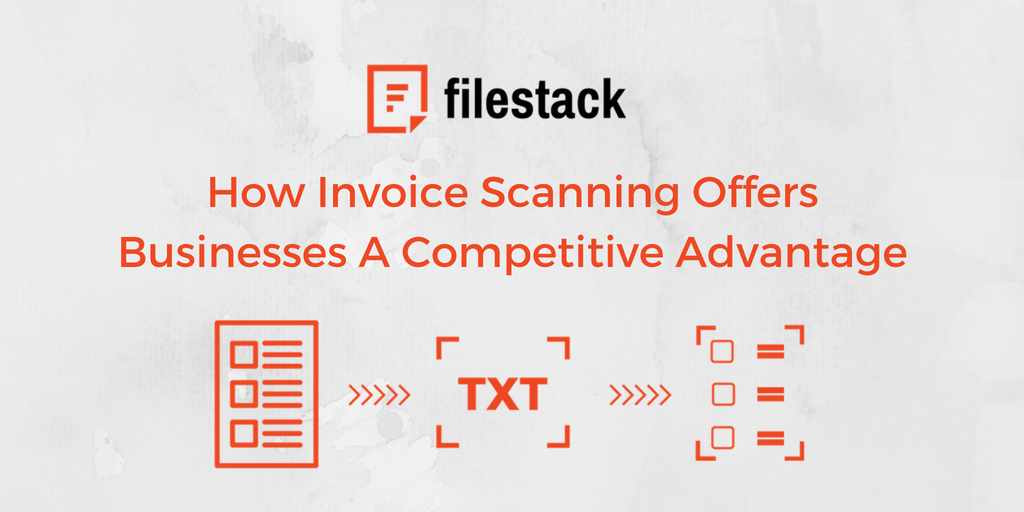In business, progress comes where we least expect it. The most transformative technologies often affect us in the subtlest of ways, and it’s only after the fact that we realize how significant they are. Invoice scanning is a powerful example of this.
Invoice scanning involves transforming invoices from a wide variety of different formats into organized, searchable digital data. By adopting this process, businesses have the opportunity to improve on multiple fronts, from cutting costs to raising productivity to making themselves accessible to a wider range of clients. It is in every company’s interest to learn how invoice scanning works and what your company can do with it.
Enhancing Strategic Advantage with Invoice Scanning
Invoice scanning, a technology-driven process that converts paper invoices into digital formats, emerges as a key player in this arena. By leveraging Optical Character Recognition (OCR) technology, businesses can transform the way they handle invoices, from processing to payment, achieving a level of efficiency and accuracy previously unattainable with traditional methods. This technological leap not only streamlines operations but also offers a suite of strategic benefits that can significantly impact a company’s position in the market.
Invoice Scanning & OCR
To understand how invoice scanning works, it’s important to review the underlying technology: OCR. Short for “optical character recognition,” OCR is the capacity to transform the information on a physical document into data that can be interpreted by and stored on a computer. This technology involves designing computer programs that know how to recognize symbols and characters, even if they do not conform to standard styles of writing. The more flexible and versatile such programs are, the wider a range of documents can be scanned.
OCR services have become increasingly sophisticated in recent years. In particular, these programs have gained the ability to recognize new symbols and styles of writing through repeated exposure. They are thus able to interpret handwritten documents, even if the writing style is uneven or unique. This opens the door to using OCR on handwritten invoices.
The Benefits of Invoice Scanning
Adopting invoice scanning is one of the best investments a company can make. This technology offers a wide range of benefits for businesses, including:
- Accommodation for All Invoices – Depending on their field and area of operation, many companies have to do business with clients and suppliers who still rely on handwritten invoices. Until now, those clients and suppliers had been at a disadvantage compared to those who filled out and submitted their invoices electronically. But with invoice scanning, companies can do business on an equal footing with all suppliers, regardless of how they submit invoices. Those that use handwritten invoices will thus prefer to work with companies that have invoice scanning, and may be willing to offer lower prices and better services to them.
- Steep Cost Cuts – Traditionally, companies had to pay skilled workers to input handwritten invoices manually into their computer systems. The cost of this ranged from $8 to $60 per document, depending on the length and complexity of the invoice. By investing in an invoice scanning program, businesses can reduce these costs to virtually nothing, more than making up for the price of the technology.
- Error Elimination – Not only is it expensive to enter handwritten invoices manually, but no matter how skilled they are, the employees who do it are prone to committing errors. Such errors can lead to payment processing delays, lost discounts, and even lost business. They also exacerbate the cost problem, because businesses have to pay employees to painstakingly search for and correct errors once it becomes clear that there is a problem. By contrast, invoice scanning applications are not prone to human errors, and can upload even the most complex invoice data accurately and comprehensively.
- Data Loss Limitation– In addition to recording data incorrectly, employees who are charged with entering invoices manually may leave out some of that data. In some cases, they’ll skip over a line or two of an invoice, leaving the record incomplete. In others, they’ll lose track of an invoice entirely while entering dozens of others, so no part of the record is uploaded. Invoice scanning applications automatically enter new invoices as soon as they become available and regardless of their format, ensuring that no important information is lost.
By providing these benefits, invoice scanning allows businesses to operate at a lower cost while providing superior services to all their clients and suppliers. The result is higher profits for them and better results for everyone they do business with. Learn more about invoice scanning and other OCR services.
Filestack is a dynamic team dedicated to revolutionizing file uploads and management for web and mobile applications. Our user-friendly API seamlessly integrates with major cloud services, offering developers a reliable and efficient file handling experience.
Read More →
